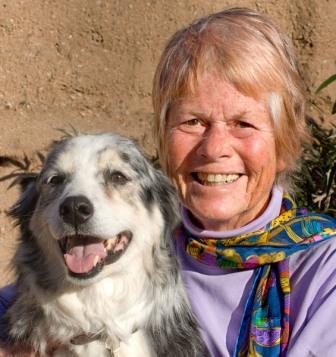
Adding a new dog to the home menagerie
Most of my experiences with bringing home shelter dogs to adopt or foster have been good ones, but I’ve had some problems too. What I have learned would take more words than I have room for, but I would like to make a few suggestions to anyone thinking of adding to their family.
First, consider the feelings of the animals you already have. The addition has got to work for everybody—you, your current animals, and the newcomers. At Bro & Tracy, we believe that resident animals have the final say in an adoption, and have sometimes been disappointed when an otherwise excellent home has not worked out because the dogs or cats said no.
Most dogs have definite preferences. My medium-size herding dogs like their own kind. They do not like big dogs. German Shepherds and a Saint Bernard I fostered were made to feel very unwelcome. They also don’t like small dogs, but tolerate them because they are not threatening. Puppies, on the other hand, are always safe. Although some may find them a nuisance, others enjoy playing with them, and none will harm them.
Gender should be considered, even though all the animals will, of course, be spayed or neutered. My two males, alpha Randy and junior Tony, are more concerned than the females with their position, so I foster females more often. However I recently brought home Cowboy, a big gorgeous Border Collie. My four females and two fosters thought he was a rock star! They chased him around, bowing and wagging their tales. I hadn’t seen anything like it since the Beatles. Randy ignored him, but Tony felt threatened and growled, so I kept him away from Cowboy for several days until he got used to him. The foster girls have gone to their new home, and now only Gracie continues to flirt with him.
Most important, do not imply, “Mi casa es su casa”! The message I try to convey to fosters is, “You are safe here, but you are not number one. Your job is to relax and get along with everybody.” Dogs are not children—they have feelings, but they are not going to be scarred for life by being made to feel less important than others.
I like to assign a new dog a spot of his own, usually a crate, where he will eat and sleep. This seems to help him feel secure. I also separate newcomers when I’m not at home. In time I get an idea about what is safe.
My energetic young Border Collies Betsy and Lizzy were destructive, and therefore continued to stay in crates when I was away from home. I strongly advised their adopters, Doris and Mike, not to take them both, but they wanted to give it a try. And they’re doing great! Sometimes I’m really happy to be wrong. The girls have gotten the older male dogs to play, and in turn have grown calm and secure enough to graduate from sleeping in their crates.
Sometimes, otherwise-friendly dogs can become resource-aggressive. In this case, I use “low-value” treats like raw carrots and broccoli, throwing them around the kitchen floor and letting the dogs scramble for them like kids. Sometimes the resource being guarded is a person, which is a problem if the new dog wants to claim her as his own. Do not allow that to happen.
Finally, keep in mind that dogs change and adapt. One may cling desperately in the first few days and then slowly be able to interact favorably with other dogs. Another may be painfully shy and take time to get close to you. Some will be experienced with other dogs, while others will fear them. Dogs, like people, need time to adjust to a new situation. Give them the benefit of the doubt, and you will most likely be rewarded as I have, with a wonderful addition to the family that none of you can imagine living without.
Photographer Joyce Fay founded Bro & Tracy Animal Welfare in 2000, a nonprofit organization dedicated to helping individual animals find the right homes. The intention of this column is to share some of those stories.
